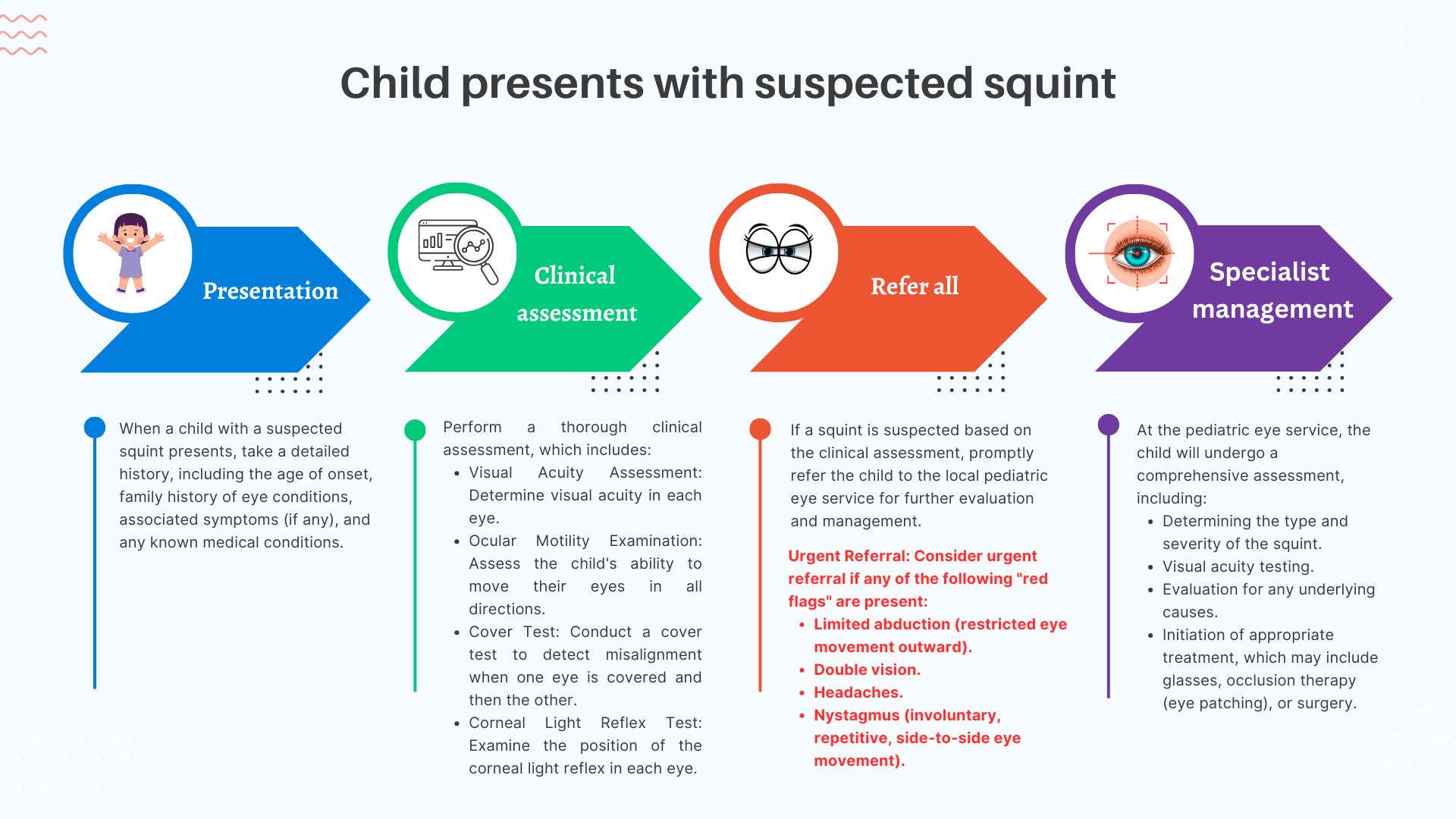Download A4Medicine Mobile App
Empower Your RCGP AKT Journey: Master the MCQs with Us!

Childhood squint, medically known as strabismus, is a condition where the eyes are misaligned, causing one eye to look in a different direction than the other. It's a common eye condition that can affect children of all ages. Managing childhood squint is essential not only for the cosmetic appearance of the eyes but also for preserving visual function and preventing complications like amblyopia (lazy eye).
In this educational resource, we present a series of tables to help primary care clinicians understand and manage childhood squint effectively. These tables provide a comprehensive overview of key aspects related to childhood squint, including its clinical presentation, red flags for serious underlying causes, treatment approaches, and the role of primary care health professionals in supporting young patients and their families.
Table 1: Comparing the Normal Eye to an Eye with a Squint
In the context of childhood squint (strabismus), understanding the fundamental differences between a normal eye and an eye affected by squint is crucial for diagnosis and management. Table 1 provides a side-by-side comparison of these two scenarios, highlighting key distinctions that aid in recognizing squint in young patients.
| Aspect | Normal Vision | Strabismus (Squint) |
|---|---|---|
| Coordination of Eye Movement | Eyes move in coordinated manner... |
Try our Free Plan to get the full article.